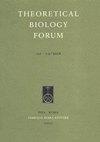Use of shared gamma frailty model in analysis of survival data in twins.
IF 1.2
4区 生物学
Q4 BIOLOGY
引用次数: 0
Abstract
In survival analysis, the effect of a covariate on the outcome is reported in a hazard rate. However, hazards rates are hard to interpret. Here we consider differences in survival probabilities instead. Using data on twins is interesting due to the fact that many observed and unobserved factors are controlled or matched. To model the correlation between twins, some authors have proposed survival models with frailties or random effects. However, there is a potential danger of bias in the estimation if the frailty distribution is misspecified. Frailties are often assumed to follow a gamma distribution. To safeguard us from the impact of the misspecification of this distribution, we consider a flexible non-parametric baseline hazard in addition to a parametric one. We will apply this methodology to the TwinsUK cohort to predict the probability of experiencing a fracture in the next five or ten years, given their bone mineral densities (BMD) and their frailty index. The models with parametric and non-parametric baseline hazards yield very close results in estimating survival probabilities and thus a choice of parametric baseline hazard is generally preferred. We find that bone mineral density is a significant predictor in the model whereas frailty index is not. Low BMD leads to a larger probability of fracture; e.g, in 10 years, the probability of fracture is 21% for low BMD group, 16% for medium BMD group and 8% for high BMD group.共享伽玛脆弱性模型在双胞胎生存数据分析中的应用。
在生存分析中,协变量对结果的影响以危险率报告。然而,危险率很难解释。这里我们考虑的是生存概率的差异。使用双胞胎的数据是有趣的,因为许多观察到的和未观察到的因素是控制或匹配的。为了模拟双胞胎之间的相关性,一些作者提出了带有脆弱性或随机效应的生存模型。然而,如果脆弱分布被错误地指定,则在估计中存在潜在的偏倚危险。弱点通常被认为遵循伽玛分布。为了保护我们免受该分布的错误规范的影响,除了参数基线之外,我们还考虑了一个灵活的非参数基线危害。我们将把这种方法应用到TwinsUK队列中,根据他们的骨密度(BMD)和脆弱指数来预测未来5年或10年发生骨折的概率。具有参数和非参数基线风险的模型在估计生存概率方面产生非常接近的结果,因此通常首选参数基线风险的选择。我们发现骨密度在模型中是一个重要的预测因子,而虚弱指数不是。低骨密度导致骨折的可能性较大;例如,在10年内,低骨密度组发生骨折的概率为21%,中等骨密度组为16%,高骨密度组为8%。
本文章由计算机程序翻译,如有差异,请以英文原文为准。
求助全文
约1分钟内获得全文
求助全文
来源期刊

Theoretical Biology Forum
Agricultural and Biological Sciences-General Agricultural and Biological Sciences
CiteScore
1.10
自引率
0.00%
发文量
0
 求助内容:
求助内容: 应助结果提醒方式:
应助结果提醒方式:


